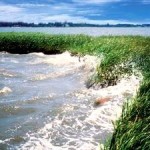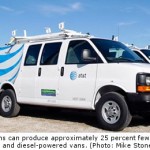 Being an environmentalist by profession, Laxmi Goparaju has worked extensively with Forestry & Ecology Division (FED) of National Remote Sensing Centre (NRSC), Department of Space, India. She holds a doctorate in Environmental Science & Technology from Jawaharlal Nehru Technological University (JNTU), Hyderabad. The topic of her thesis, “Community Diversity Assessment in Vindhyans using Remote Sensing and GIS” formed a part of the Indian Space Research Organisation’s Geosphere Biosphere Programme (IGBP) that addressed issues related to global warming at regional and global level. (Click here for detailed profile.)
Being an environmentalist by profession, Laxmi Goparaju has worked extensively with Forestry & Ecology Division (FED) of National Remote Sensing Centre (NRSC), Department of Space, India. She holds a doctorate in Environmental Science & Technology from Jawaharlal Nehru Technological University (JNTU), Hyderabad. The topic of her thesis, “Community Diversity Assessment in Vindhyans using Remote Sensing and GIS” formed a part of the Indian Space Research Organisation’s Geosphere Biosphere Programme (IGBP) that addressed issues related to global warming at regional and global level. (Click here for detailed profile.)
Introduction
Forests are renewable natural resources. Around one third of the globe is covered by forests of one type or the other. Forests harbour rich biodiversity of both plant and animal species. Forests play a vital role in our lives by providing us with food, fuel and medicines. They help in regulating the biogeochemical cycles; recycling of waste, help in creating pure drinking water, in generating soil fertility, in reducing flood havoc and landslides. Besides this, they form the backbone to the economic system of the country by providing goods and services to the people and industries. The main component derived from forests is wood or timber, which is used as a raw material by a number of industries. Thus, our industries are also dependent on the wealth of the forests and, therefore, it is necessary to keep the good health of the forests.
In the present century rapid industrialization and urbanization has led to the degradation of the forests. With an urgent need to protect the forests and to put a stop to further damage to the environment, it is necessary that proper measures are taken in this direction. In this aspect, let us see how Geospatial Technology helps in monitoring the forest resources. Figure 1 shows flow chart explaining the components of geospatial technology.

Satellite remote sensing data in conjunction with Geographic Information Systems (GIS) provides the ecologists a new tool for analyzing the influence of the environment on plant community distribution. Sensors of various resolutions help in monitoring the forest fragmentation at various spatial scales. GIS helps in management and integration of various ecological and socio-economic data. GIS is a database which efficiently stores, retrieves, manipulates analyses and displays the data according to the specifications. The use of GIS to develop plant community environment interactions has the advantage that it allows researchers to compare variables across the entire surface, rather than just few points, and reduces the bias introduced by subjective sample point selection. If statistically valid relationships can be developed between plant communities and environmental variables, they can be used to predict community distributions form environmental conditions alone (static conditions), or community response to environmental change (dynamic conditions).
Remote Sensing Satellites
A satellite with remote sensors to observe the earth is called a Remote-Sensing Satellite, or Earth Observation Satellite. Important Remote-Sensing Satellites are characterized by their altitude, orbit and sensor. When talking about satellite remote sensing data, a lot is talked about various types of resolution that play a major role in deciding the type of study. They are Spectral, Radiometric, Spatial and Temporal Resolution. Resolution is defined as the ability of an entire remote-sensing system, including lens antennae, display, exposure, processing, and other factors, to render a sharply defined image.
- Spectral Resolution of a remote sensing instrument (sensor) is determined by the band-widths of the electro-magnetic radiation of the channels used. High spectral resolution, thus, is achieved by narrow bandwidths width collectively, and is likely to provide a more accurate spectral signature for discrete objects than broad bandwidth.
- Radiometric Resolution is determined by the number of discrete levels into which signals may be divided.
- Spatial Resolution in terms of the geometric properties of the imaging system is usually described as the Instantaneous Field of View (IFOV). The IFOV is defined as the maximum angle of view in which a sensor can effectively detect electro-magnetic energy.
- Temporal Resolution is related to the repetitive coverage of the ground by the remote-sensing system. E.g., the temporal resolution of Landsat 4/5 is sixteen days.












